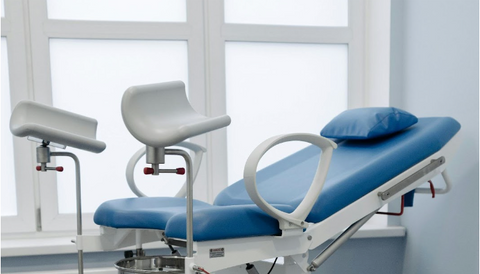Cervical Cancer Awareness Month
Written by Claire Corbin
Cervical cancer can be highly preventable, treatable, and curable if found early. According to the CDC, as many as 93% of cervical cancers can be prevented. While it was once the leading cause of cancer deaths among Americans with cervixes, the increased use of Pap smears and other preventative methods has significantly reduced its prevalence. Today, diagnosis’ of pre-cancers in the cervix occur more frequently than cervical cancers, indicating they tend to be detected much earlier than in the past. This is why routine screenings and prevention are very important for your cervical health!
HPV Vaccine
HPV is the most common sexually transmitted infection and in most cases, is harmless and self-resolving. However, there are more serious types of HPV that can persist and can lead to health problems like warts and cancers, including cervical cancer. After someone gets a high-risk type of HPV, it often takes a long time for it to cause cancer.
Rates of cervical cancer significantly decreased worldwide once the HPV vaccine was approved in 2006. It’s highly effective at safeguarding against high-risk HPV! You can get it between the ages of 9 and 45. It's typically recommended for children to get the vaccinated for HPV around 12 years old (but don't worry, you can still get it as an adult too if you haven't gotten it previously). And here’s a reminder - using protection during sex can help reduce the risk of getting HPV too!
Routine Screening
Wellness exams including Pap smear and HPV tests look for changes in the cervical cells. If your doctor does find precancerous cells, early detection means they can be treated right away before they progress to cancer. Generally, it’s advised to get a Pap test annually and an HPV test every 5 years starting at age 21. You should talk to your doctor to determine when to start these tests and how often to get them!
Disproportionate Access to Prevention Methods For Cervical Cancer
Unfortunately, many preventative methods for cervical cancer are not readily available to everyone. Most cervical cancer cases and deaths occur in lower-income countries where access to health services like screening and treatment is limited. The National Cervical Cancer Coalition states, “Few diseases reflect global inequities as much as cancer of the cervix.” In 2018, the World Health Organization (WHO) initiated a global strategy to eliminate cervical cancer with an aim to lower the incident rate to below 4 occurrences per 100,000 people with cervixes by 2030.”
Sources:
https://www.who.int/initiatives/cervical-cancer-elimination-initiative
https://www.cdc.gov/vitalsigns/cervical-cancer/index.html
https://www.nccc-online.org/hpv-vaccines/
https://www.plannedparenthood.org/blog/january-is-cervical-health-awareness-month-3
https://www.aacr.org/patients-caregivers/awareness-months/cervical-cancer-awareness-month/
https://www.iarc.who.int/featured-news/iarc-marks-cervical-cancer-awareness-month-2024/
https://www.hopkinsmedicine.org/health/treatment-tests-and-therapies/pap-test
https://www.plannedparenthood.org/learn/cancer/cervical-cancer/whats-hpv-test
0 Comments
There are no comments yet. Be the first one to post one!